INTRODUCTION
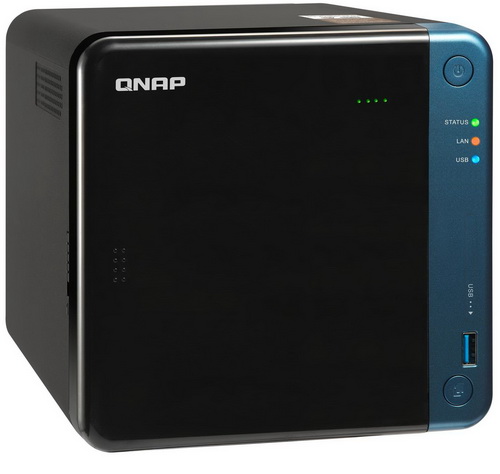
Although the most popular uses people have for NAS (network attached storage) servers are local and cloud backups, web hosting, file sharing and network video recording more and more use them as centralized media servers both for media file sharing (local and distant) and playback. This isn't a coincidence of course since largely due to the arrival of 4k movies (finally in large numbers) media libraries have skyrocketed in size and NAS servers with their multiple drive bays are ideal to store them in. Because of this most NAS manufacturers have launched several new models in late 2017 and early 2018 which are not only capable of 4k playback but are also 10GbE compatible for demanding users who are looking for extremely fast local network performance. One such model is the brand new TS-453Be 4-Bay NAS by our good friends over at QNAP which we've been testing for almost 20 days now.
QNAP Systems, Inc., headquartered in Taipei, Taiwan, provides a comprehensive range of cutting-edge Network-attached Storage (NAS) and video surveillance solutions based on the principles of usability, high security, and flexible scalability. QNAP offers quality NAS products for home and business users, providing solutions for storage, backup/snapshot, virtualization, teamwork, multimedia, and more. QNAP envisions NAS as being more than "simple storage", and has created many NAS-based innovations to encourage users to host and develop Internet of Things, artificial intelligence, and machine learning solutions on their QNAP NAS.
The TS-453Be is equipped with the Intel Celeron J3455 quad-core CPU clocked at 1.5GHz (2.3GHz burst speed, 64Bit, 2MB L2 Cache, 14nm) featuring the 9th generation Intel HD Graphics 500 (250Mhz base frequency with 750Mhz burst) and up to 4GB DDR3L SODIMM RAM clocked at 1600MHz. Strangely enough despite being one of the latest NAS models to get released by QNAP and even though it can be outfitted with up to 8GB DDR3L RAM the TS-453Be is currently available in two versions with just 2/4GB (usually we see 4/8GB models by QNAP). In terms of connectivity the TS-453Be comes ready with a PCIe 2.0 x2 slot (for use with a compatible 10GbE, USB 3.1, Wireless or M.2 card), 2 Gigabit RJ45 Ethernet ports, 5 USB 3.0 type-A ports, 2 HDMI v1.4b ports (3840x2160@30Hz max), two 3.5mm microphone input ports, 3.5mm speaker output port and a build-in IR sensor which can be used with QNAP's RM-IR004 remote control (optional).
SPECIFICATIONS AND FEATURES

PACKAGING AND CONTENTS
Much like with most NAS models lately we received the TS-453Be inside a plain cardboard box that only has the company logo and a sticker at the front which contains a product picture and the main product specifications.
Some of the possible usages one may use the TS-453Be for are printed at the rear.
The usual welcome message by QNAP is the very first thing you'll see when you open the box.
Once again the NAS is wrapped inside a plastic bag and placed between two thick foam spacers for maximum protection.
Inside the box you will find the TS-453Be NAS server with its power adapter and cord, LAN cable, two bags with HDD mounting screws and the installation guide.
THE TS-453BE-4G EXTERIOR
Measuring 226mm in length, 170mm in width and 168mm in height the 2.33Kg heavy TS-453Be is just a tad larger compared to previous 4-bay QNAP models (the exterior is also made entirely out of plastic).
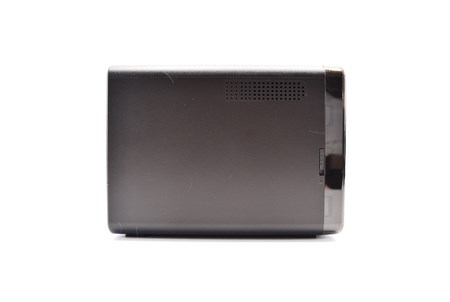
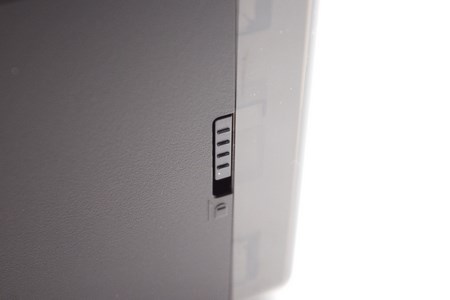
A small section on the upper right corner of the left side is perforated but what stands out is this switch which is used to release the front cover (fascia).
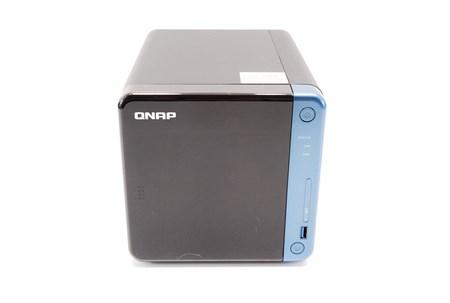
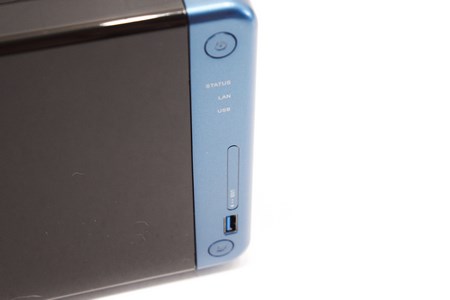
At the front we see a tinted plastic cover, the on/off power button, status LEDs, USB 3.0 port and the usual one touch backup button.
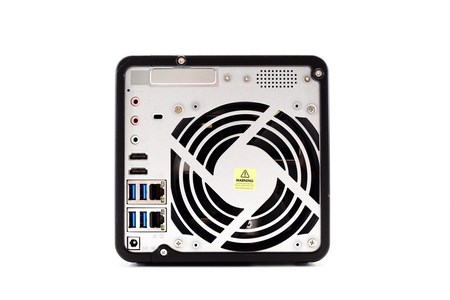
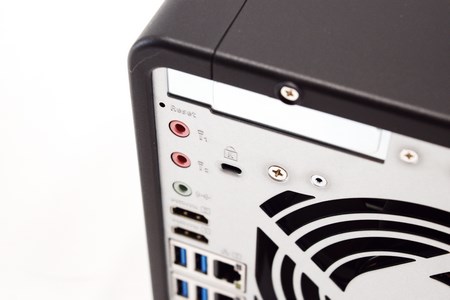
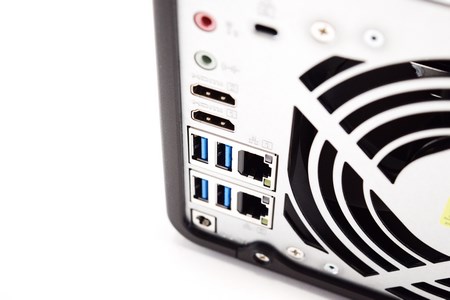
As you can all see the rear is filled with goodies so here we find an PCIe expansion slot, reset button, two microphone 3.5mm ports, Kensington lock, speaker 3.5mm port, two HDMI v1.4b ports, 4 USB 3.0 ports, two RJ45 Ethernet ports, DC in and an 120mm exhaust fan.
The enclosure is also partially perforated at the base and has 4 rather tall rubber feet attached to it.
Once you remove the rear screws unlocking the enclosure is very easy as long as you follow the markings above.
THE TS-453BE-4G INTERIOR
As mentioned in the previous page to unlock and remove the front cover you need to push the switch located on the left side.
Once you do that you can access the 4 drive trays seen above.
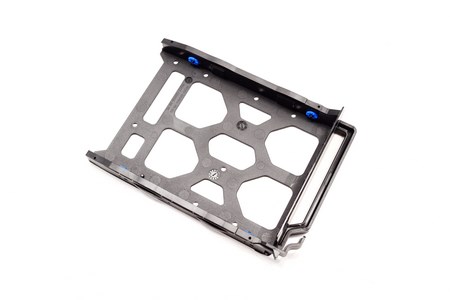
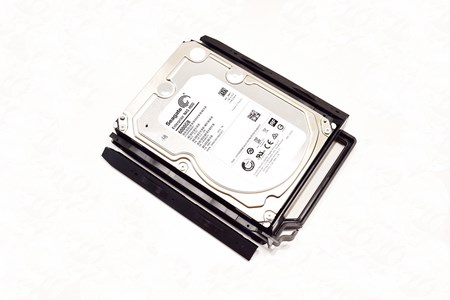 These drive trays are made out of hard plastic and feature a tool-less system (you can also use screws for even more stability).
These drive trays are made out of hard plastic and feature a tool-less system (you can also use screws for even more stability).
Although the exterior of the enclosure is made out of plastic its frame as expected is made out of aluminum.
Here we see the PCIe 2.0 x2 slot.
The TS-453Be may come with up to 4GB DDR3L SODIMM RAM from the factory (by Micron in our sample) but there's an empty SODIMM slot in which you can add another 4GB module.
For 10GbE tests we'll be using an LAN-10G1SR Single-Port 10 Gigabit PCI-Express Network Expansion Card by QNAP.
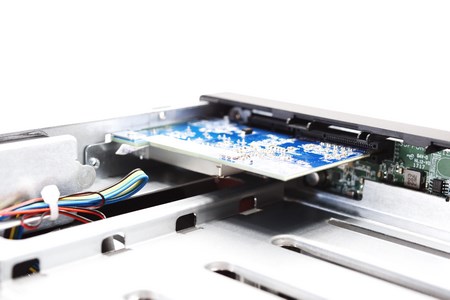
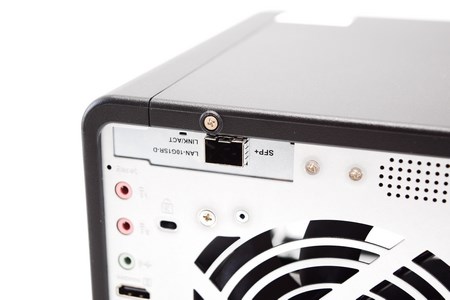
Once mounted the card is secured in place via a tiny screw.
With all 6 Seagate Enterprise NAS 6TB hard disk drives mounted we're good to go.
SETUP
There are several ways you can detect and setup the NAS but using the latest version of Qfinder Pro is the best and this is what we used here as well (you can download this program from the official QNAP support page).
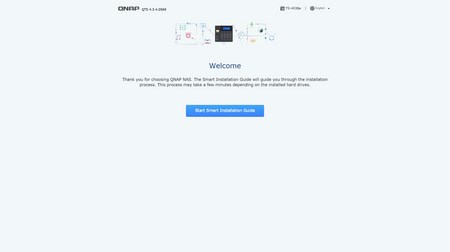
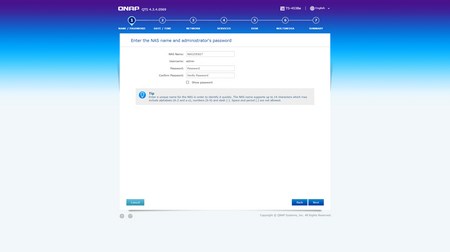
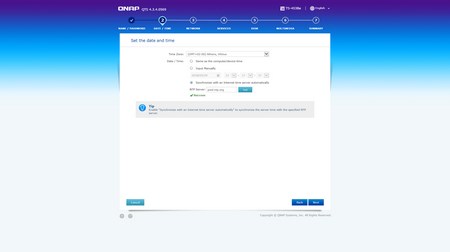
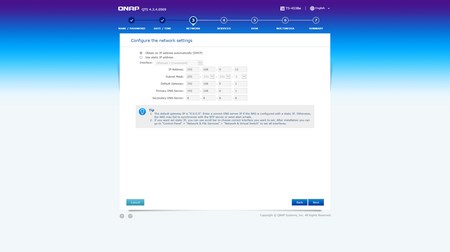
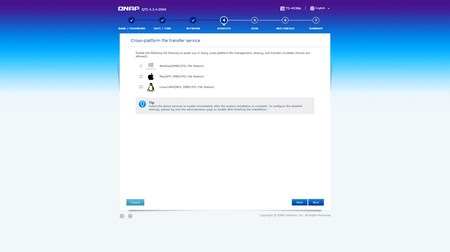
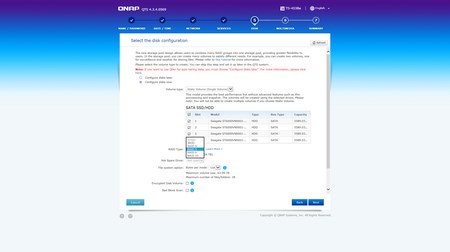
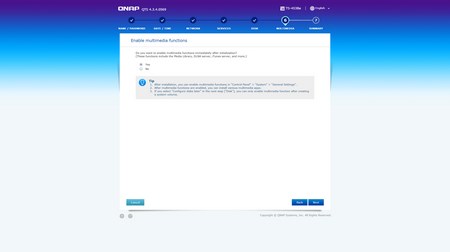
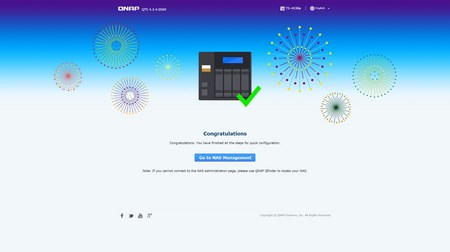
Once the setup procedure starts you will need to enter a new name and password for the NAS, set the date and time, adjust the network settings, select whether or not the NAS will be connected to Linux and MAC systems (aside Windows) and configure the installed drives.
QTS 4.3.4 PART 1
Just like with previous QTS versions the login screen is filled with colorful pictures.
Once again the first time you log into the web interface you will see a license popup informing you that you can purchase even more “software” licenses.
As usual the main web interface screen lists all available apps and as always you can launch the system status monitor from the lower right while the “start” like menu is accessible from the left top corner.
The new Qboost resource monitor/Booster can be accessed from the top right corner or by clicking on the robot.
Since the TS-453Be can be used with microphones and a speaker you can control their volume levels from the top bar as seen above (right next to the admin drop down menu).
Everything you need in terms of available settings is present in the slightly revamped control panel page.
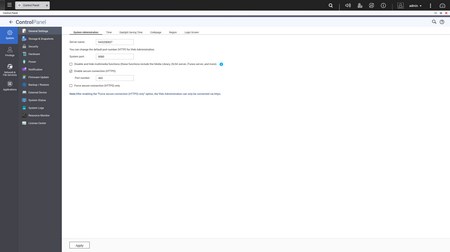
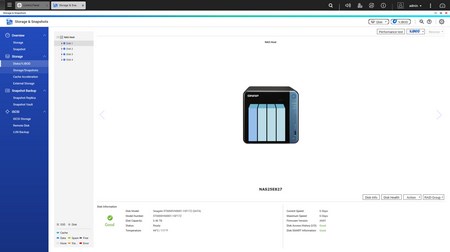
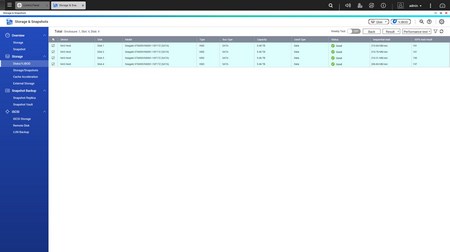
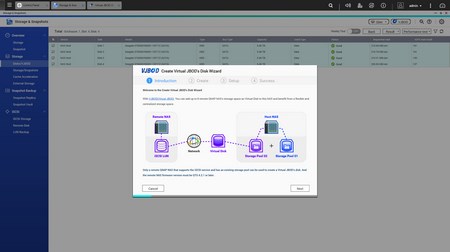
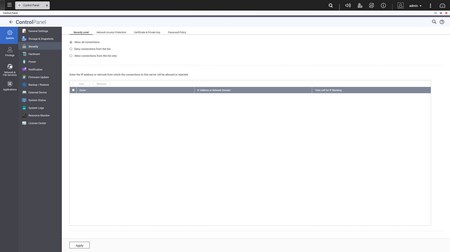
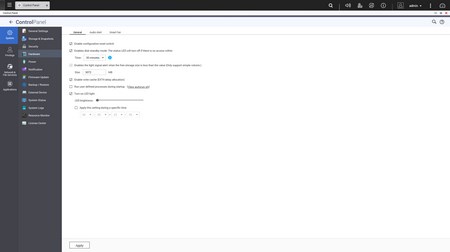
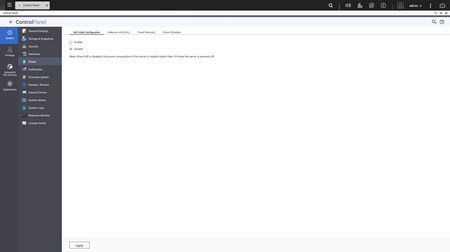
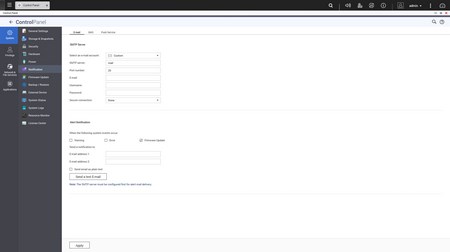
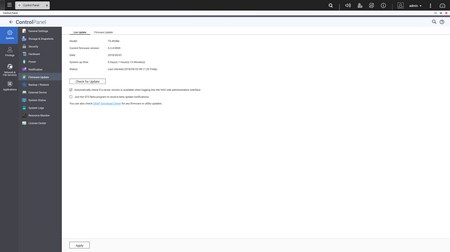
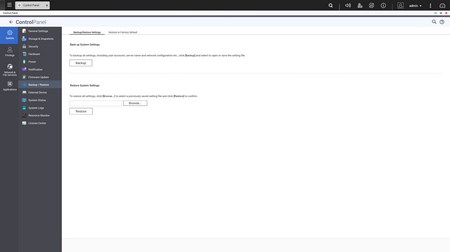
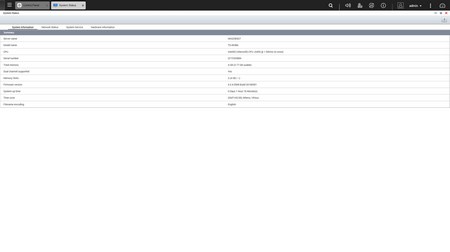
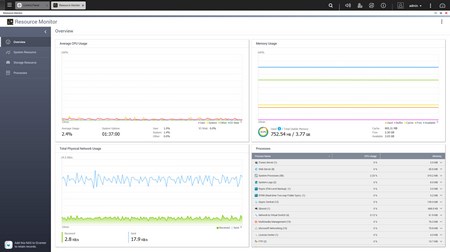
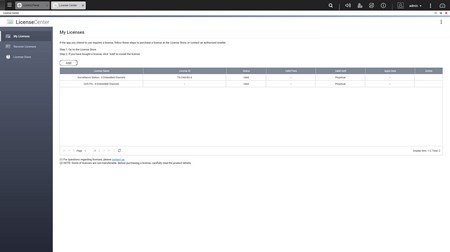
Via the System Settings menu you can set the name for the server, adjust time, set a password, change the codepage, adjust the login screen, specify your location, adjust the network IP, play around with power options, set notifications, check the state of the installed drives, create storage pools, use the new snapshot backup feature, setup cache acceleration (via SSD), use the new remote VJOB feature, enable/disable various security settings, configure the speed of the fan, audio alerts and LED intensity, backup and restore NAS data, configure external devices, check hardware information, setup backup options, access external device settings, access the detailed resource monitor, check logs, check the already installed and add more licenses and needless to say perform firmware updates.
The Privilege Settings tab has remained the same for many years now and from here you can create new users, assign those users to groups, setup shared folders, set specific quotas for each user and configure domain security and controller.
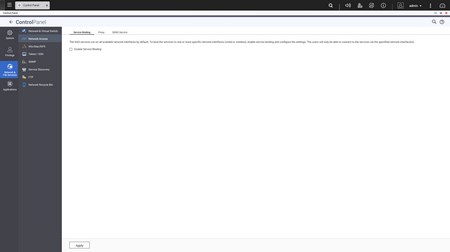
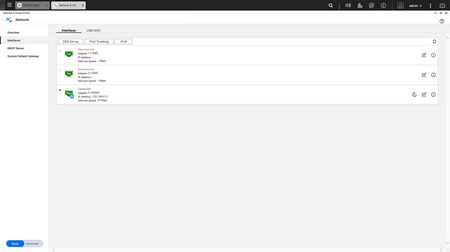
From within the Network Services menu you will find network-related options including TCP-IP server settings, Wireless USB settings, DDNS configuration and more.
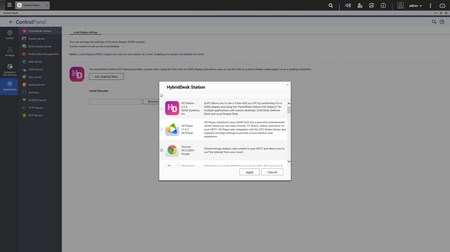
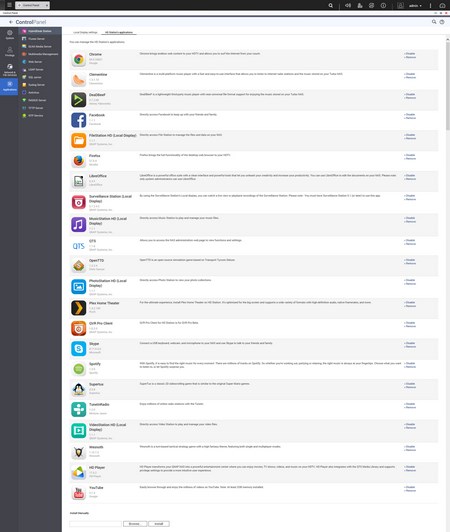
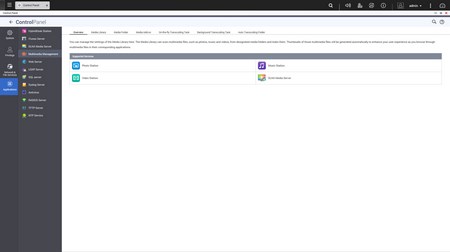
From the applications tab you can install the HybridDesk Station apps (for HDMI access) and enable/disable most of the essential apps of the NAS such as the DLNA, iTunes and Web servers, Anti-Virus and much more.
QTS 4.3.4 PART 2
By default the TS-453Be-4G comes with 8 pre-installed apps.
Worth pointing out is that currently QNAP offers a total of 135 free apps for this specific model (lower-end models have less while higher-end models have even more).
Although the latest version of the File Station app (v5) is far more responsive than previous ones I still prefer mapping network locations since it’s a lot faster.
The MyQNAPCloud app (CloudLink is also part of this app) is among the most useful ones since it allows you to access your NAS from anywhere in the world as long as you have access to the internet. The entire process is automatic (you will need to register an account however) but you may be required to “dirty” your hands a bit if your modem/router is not compatible.
As clearly stated by its name via the Media Streaming Add-On you can stream media to different devices using DLNA, Airplay, Chromecast and HDMI (not a feature we used with this NAS).
Qsync Central allows you to have your files synced between all your devices as long as the app is loaded.
Cinema28 is among the latest apps by QNAP and what it basically does is to enable the end user to stream media files to multiple media devices that are connected to the NAS itself (you can also connect speakers and headsets via USB with the NAS).
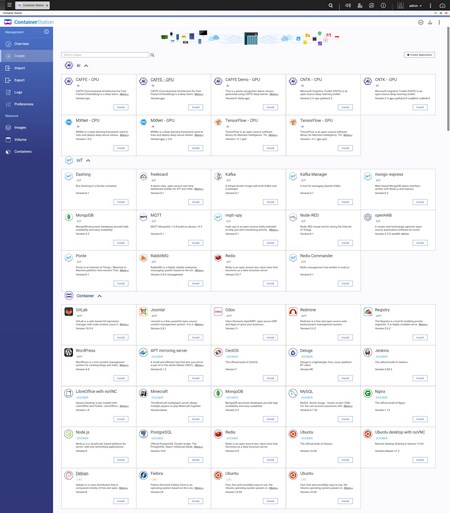
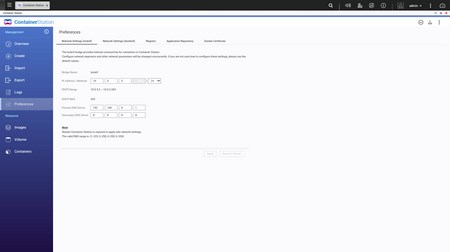
The container station app allows you to operate multiple isolated Linux systems on a QNAP NAS (along with several other apps).
With the Music Station you can stream and playback your entire music collection without switching to an external app.
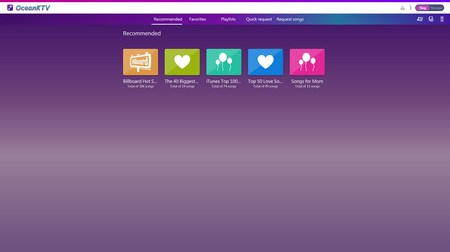
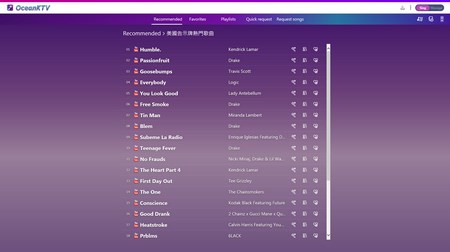
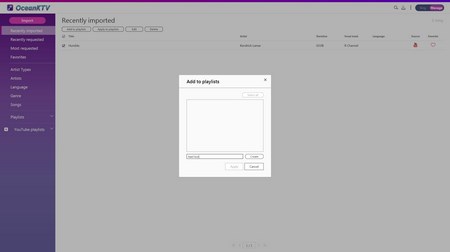
If you’re into Karaoke then the OceanKTV app is for you since it transforms the NAS into a Karaoke machine (uses YouTube for the songs).
Via Q’center you can access and manage a large number of QNAP NAS Servers a lot faster/efficiently than if you logged into each one.
Need be you can also run your very own proxy server by using the available app as seen above.
Via the new photo station you can see and share all your pictures with other systems and mobile devices.
Unfortunately the Virtualization Station app can’t run on the TS-453Be unless you install 8GB DDR3L RAM.
The Download Station is a handy tool which you can use to download files either via Torrent or direct HTTP/FTP download.
Qsirch is a new application which allows the end user to search for specific files inside the NAS at incredible speeds. It may not come in handy much for home use but for office use it could prove to be a valuable addition.
The Video Station app allows playback of media files (unfortunately it doesn’t support all media extensions).
If you have multiple email accounts and are looking for the most efficient way to check your emails the QmailAgent app by QNAP (email server) should have everything you need.
With malware becoming more dangerous each day that goes by QNAP recommends installing this Malware Remover app for increased system protection.
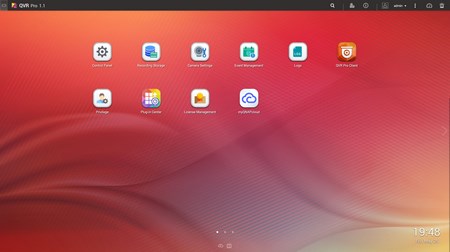
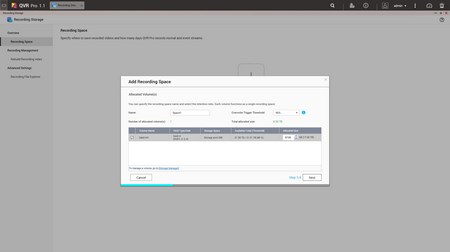
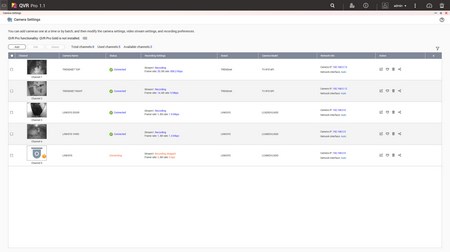
QVR Pro is an upgraded version of the classic Surveillance Station with a larger number of available IP camera models, extra camera spots and remote viewing (automatic detection still doesn’t work flawlessly but you can always add your IP camera models manually).
HYBRIDDESK STATION
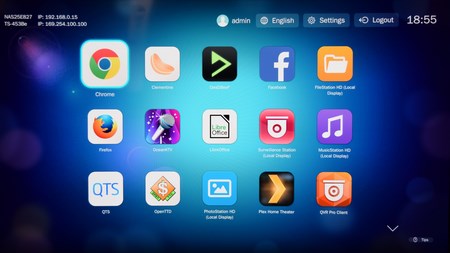
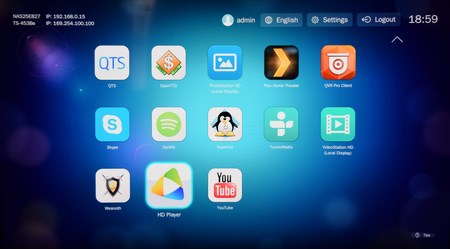
By installing the applications required to enable the HybridDesk Station you can use most of the applications found in the NAS from the comfort of your living room and/or bed. The applications installed are Google Chrome, Clementine (multi-platform music player), DeadBeef (music player), Facebook, File Station HD, Firefox, OceanKTV (Karaoke), LibreOffice (office suite), Surveillance Station, Music Station HD, QTS (web interface), OpenTTD (game), Photo Station HD, Plex Home Theater (media player), QVR Pro Client (Surveillance Station Upgrade), Skype, Spotify (music, podcast, and video streaming service), Supertux (game), TuneInRadio (online radio), Video Station HD, Wesnoth (game), HD Player (combines the photo, music, video stations) and YouTube.



Once again if Karaoke is your thing then the OceanKTV will brighten your day not only because of its new features and plethora of available songs (via YouTube) but also because of its very easy to navigate interface.
The new QVR Pro Client is more versatile compared to the usual Surveillance Station Pro we’ve known and used for so long.
Accessing the QTS OS from HDMI may not be nearly as smooth as the desktop browser version but it can come in handy for emergencies.
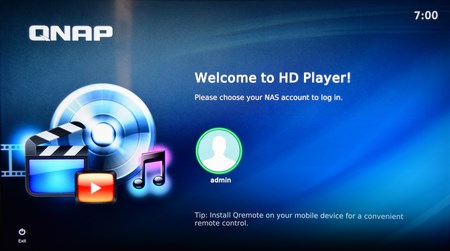
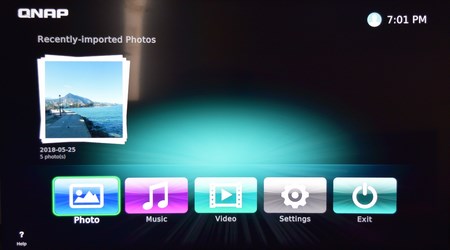
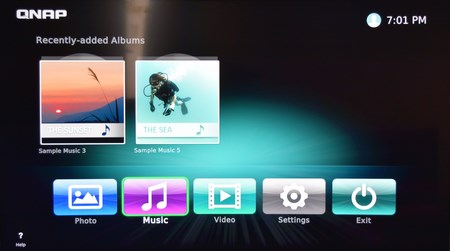

The HD Player allows you to view pictures listen to audio and watch video clips but it lacks many things we’ve gotten used to from KODI including support for some file formats.
Of course it’s always worth pointing out that you can still install KODI on your own by downloading and manually installing the latest QPKG file (even though QNAP does not officially support it).



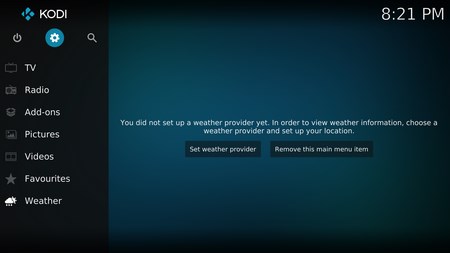
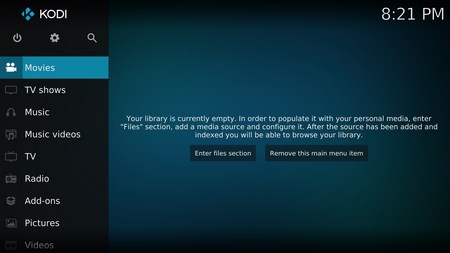
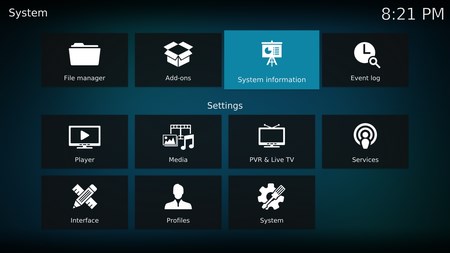
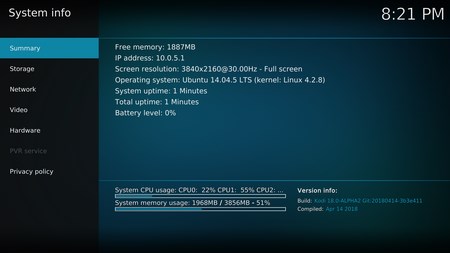
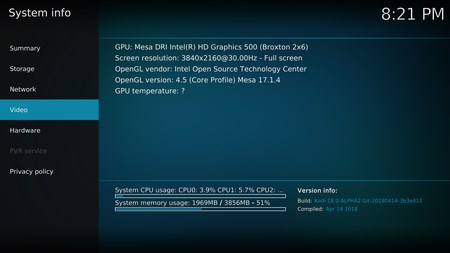
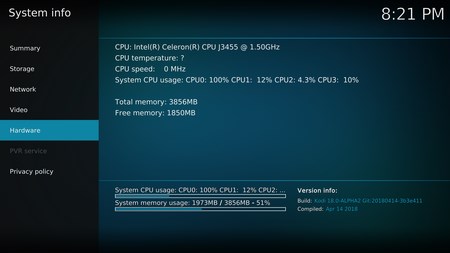
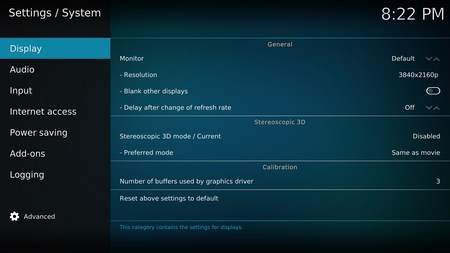
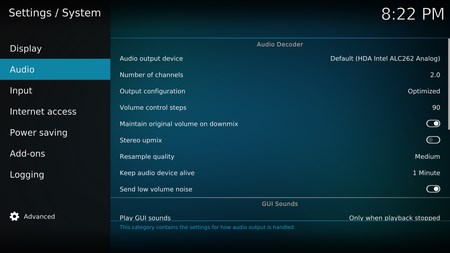
I don’t know if there are other versions of KODI available for QNAP NAS servers but we installed v18.0 Alpha 1 (Leia) which as you can see from the above pictures worked flawlessly.
TESTING METHODOLOGY – PERFORMANCE RESULTS
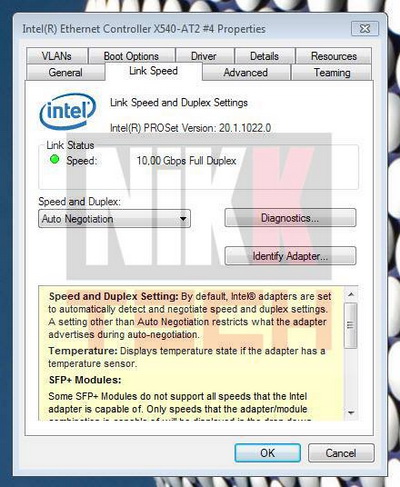
Originally we had decided that since some of the NAS servers/devices we've tested in the past are no longer in our possession (naturally) we would keep performing the exact same testing methodology we did in the past for as long as possible in order to provide accurate comparison results. However since our real-life tests are not enough for some people we also decided to throw in ATTO and Crystal Disk Mark to cover the more demanding users. However as always we will be using a single Seagate Constellation ES.3 4TB SATA III and up to 10 Seagate Enterprise NAS 6TB SATA III hard disk drives with 3.5” compatible units (we switched to 6TB models for RAID tests since May 2017) and up to two (for now) Enterprise Capacity 2.5 HDD V3 2TB SATA III HDDs with 2.5” compatible units to perform several upload/download tests with 10.9GB (Single) and 40,8GB (RAID) files. Tests are repeated a total of 4 times after which we record the average numbers (from the 4 peak ones) into our charts. The network device used for 1GbE tests is the same Netgear D7800 Gigabit VDSL Modem/Router we’ve been using lately when performing tests on NAS servers. Since the 25th of June 2015 for 10GbE tests we’ll be using a Netgear ProSafe XS712T 10G Smart Switch and an Intel XT540-AT2 10GbE PCIe card (10GbE compatible NAS cards will be provided from each company and stated in each review).
SINGLE DISK TESTS
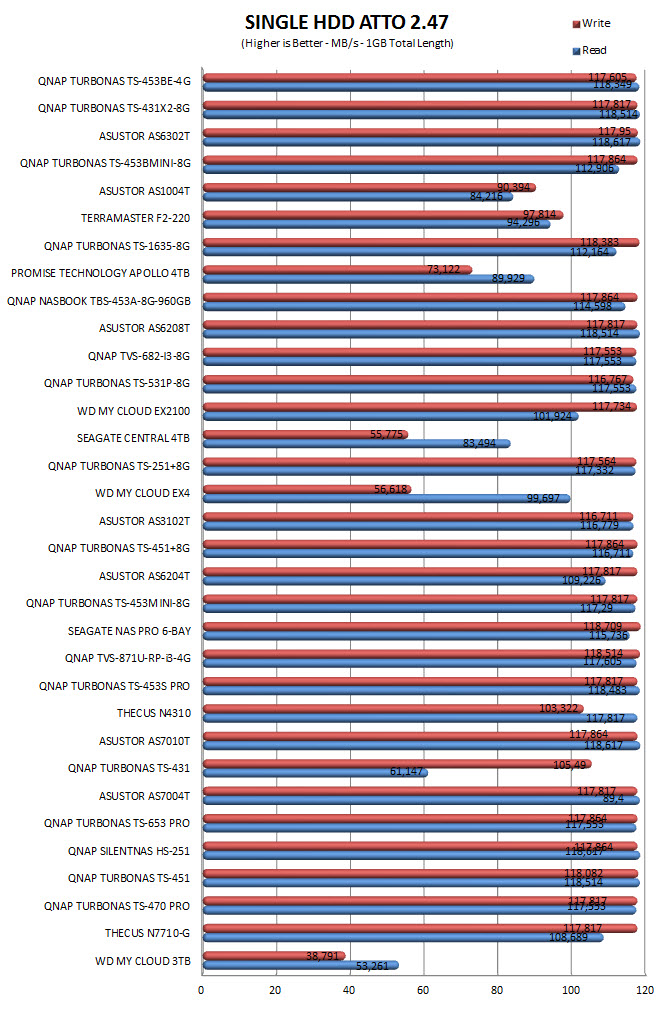
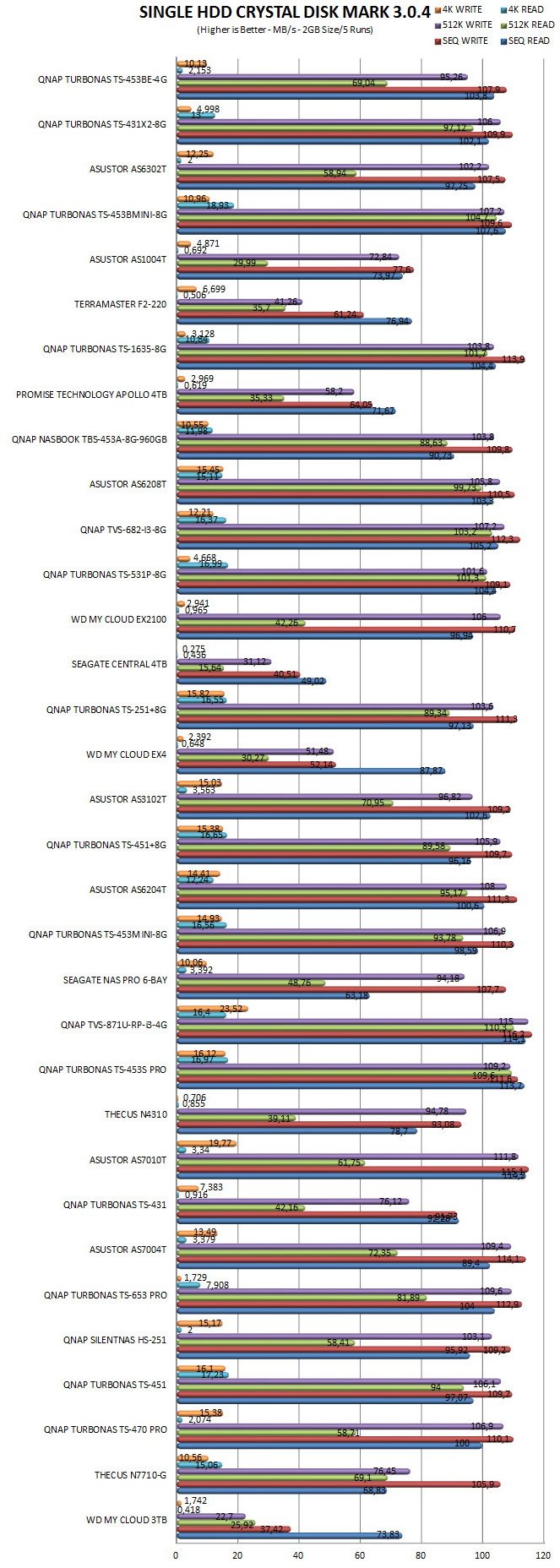
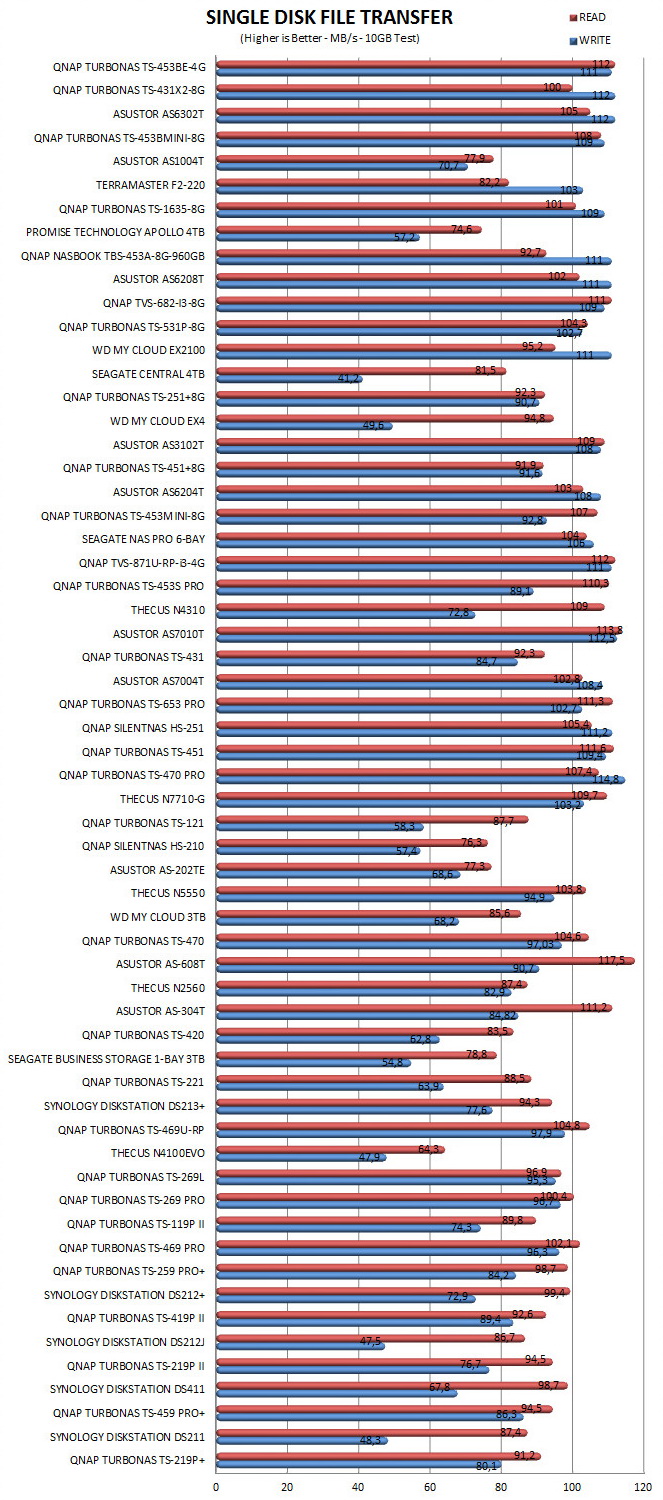
RAID TESTS
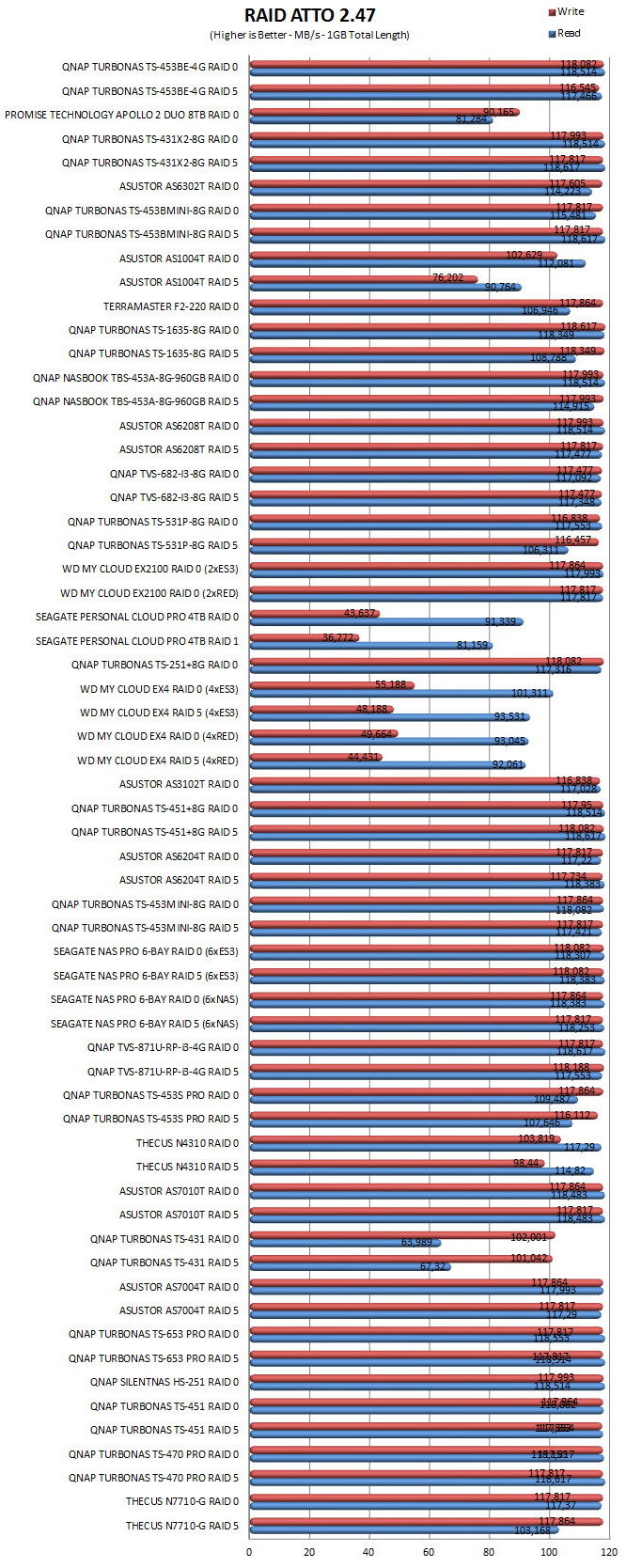

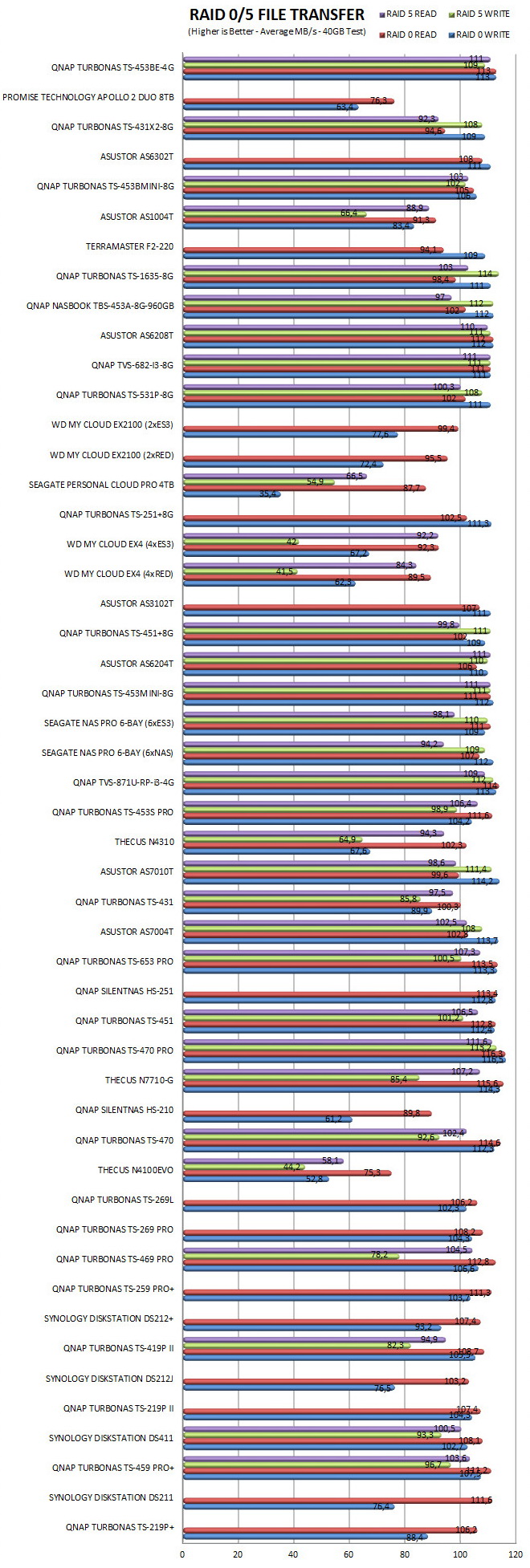
TEST RESULTS – 10GBE
SINGLE
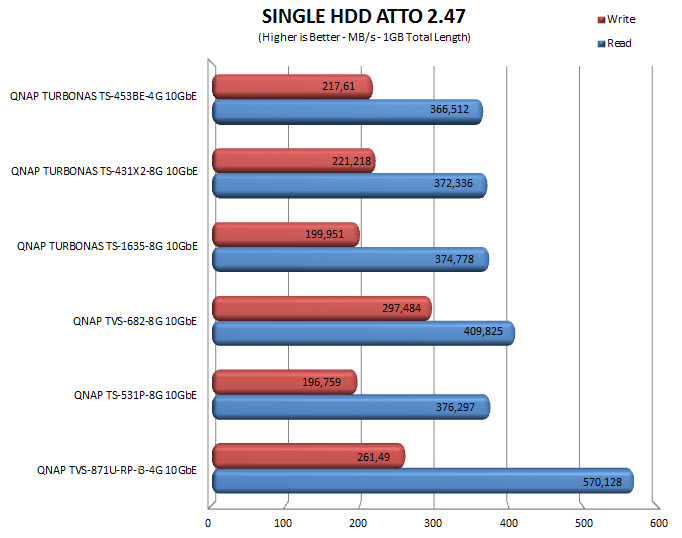
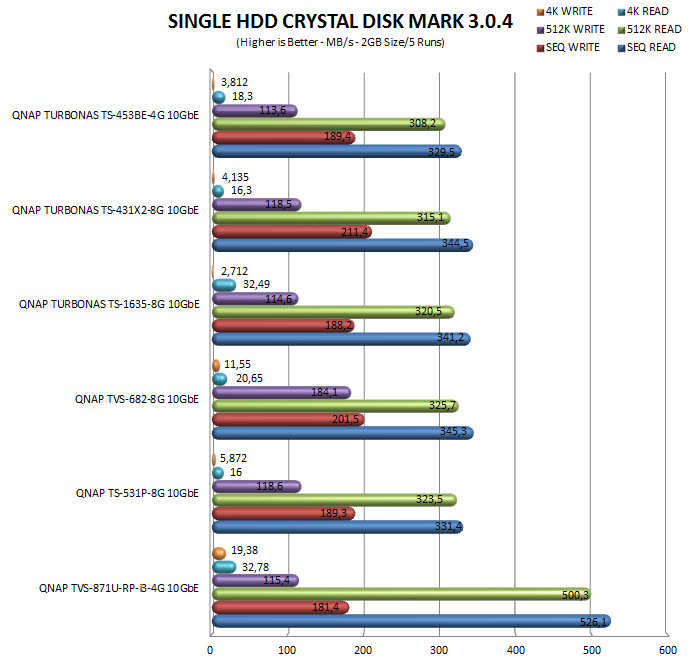
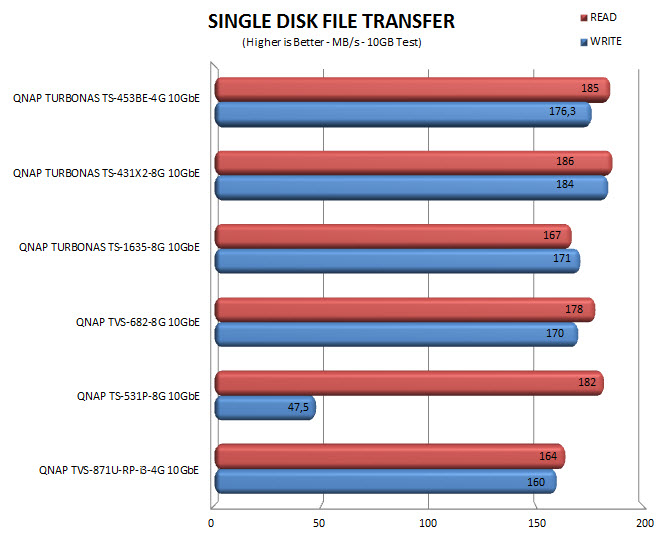
RAID
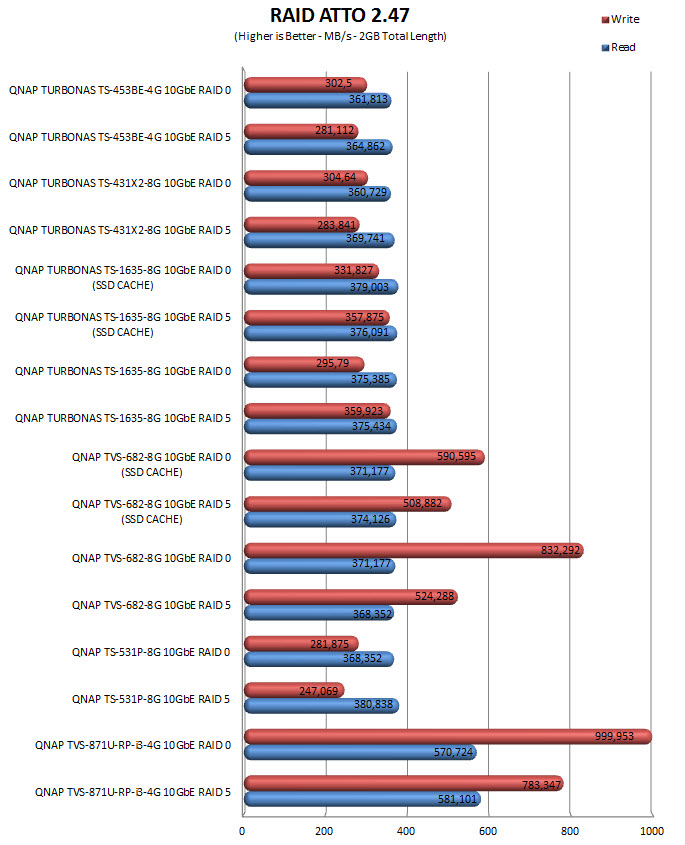
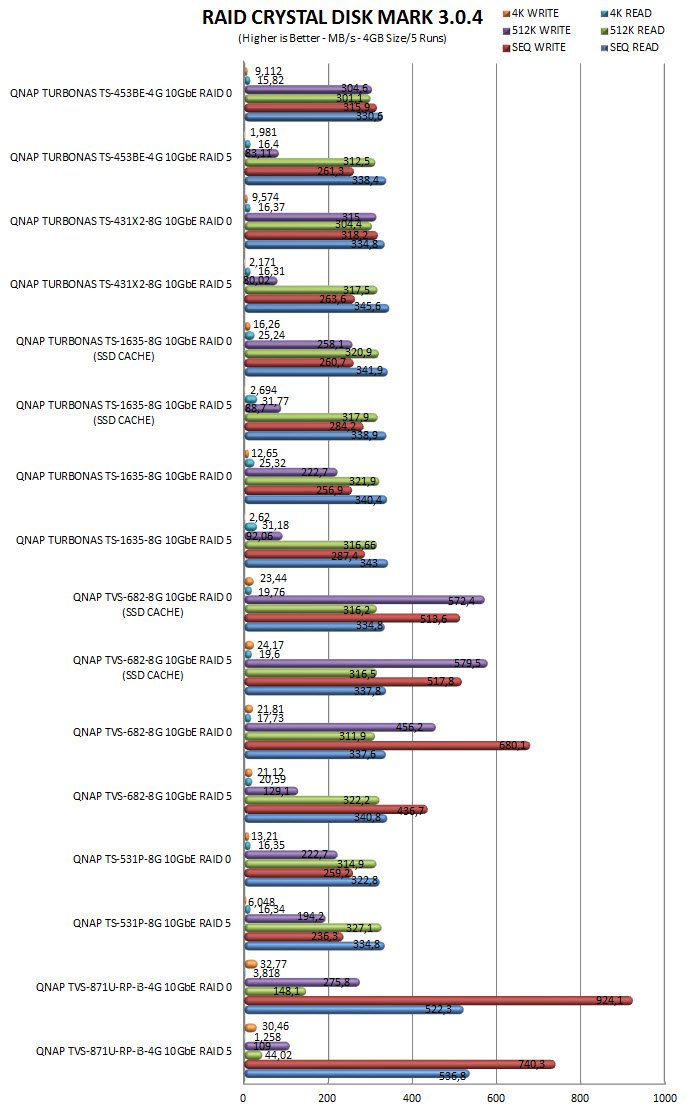
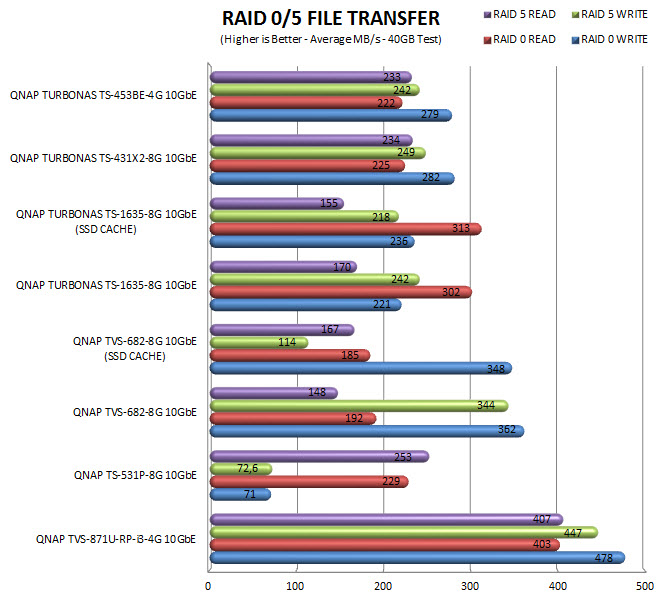
TEST RESULTS – TEMPERATURES / CONSUMPTION / NOISE
TEMPERATURES

POWER CONSUMPTION

NOISE LEVELS

CONCLUSION
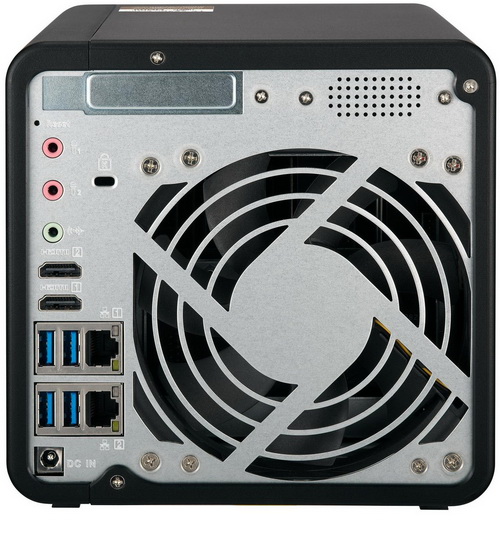
The TS-453Be-4G arrived in our lab roughly two months ago and it wasn’t until early May that we finally started our tests and realized that it came with just 4GB DDR3L RAM. Not that 4GB is not a good number (after all many models out there come with just 2GB RAM) but to date QNAP mostly had 4GB and 8GB variants of their NAS servers so 2GB and 4GB did seem a bit strange. In the end having just 4GB (when most QNAP models in our charts have 8GB) didn’t affect our performance tests as much as we thought they would but as you also saw there are some limitations such as not being able to run the Virtualization Station (the good news however is that you can add 4GB RAM extra). The removable front cover is a nice touch since it protects the drives inside (although it does keep air from reaching the drives compared to other models), the 5 USB 3.0 ports are certainly more than what we see with the majority of NAS models in the market and the same applies for the dual HDMI v1.4b outputs, the microphone and speaker 3.5mm ports (primarily if you’re into Karaoke) and the PCIe 2.0 x2 expansion slot. Unfortunately unlike the TS-431X2 the TS-453Be doesn’t come with a built-in 10GbE port but prices for SFP+ expansion cards have dropped considerably so that shouldn’t be enough to keep potential buyers away. Unfortunately QNAP has still to make a KODI alternative available for their NAS (the HD player is just not as good) and that’s perhaps the one thing we’d like QNAP to focus on more.
At the time of this review the TS-453Be-4G retails for USD543.51 inside the USA (Amazon.com) and for 557.15Euros inside the EU (Amazon.de) so although not as cost-effective as some other models if you take into account its 4k playback capabilities (specs) and all of its available connectors it’s actually a very solid proposal. Thanks to its performance levels, features (software and hardware) and available connectors the TS-453Be-4G gets our Golden Award.

PROS
- Very Good Performance
- Power Consumption
- 2 Gigabit Ethernet Ports
- 5 USB 3.0 Ports
- Two HDMI v1.4b Ports
- PCIe Gen2x2 Slot
- Built In Speaker (Audible Warnings)
- Two Microphone 3.5” Ports (Can Be Used For Karaoke)
- SSD Cache Feature
- Available Apps (135 At The Time Of This Review)
- RAID 0/1/5/6/10 + hot/global hot spare
- QTS 4.3.4 OS
CONS
- Still No KODI Equivalent
- Only 2/4GB Versions Currently Available (Expandable To 8GB)

 O-Sense
O-Sense





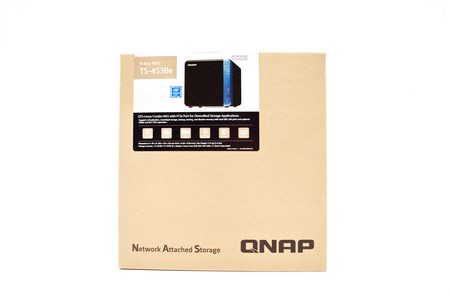
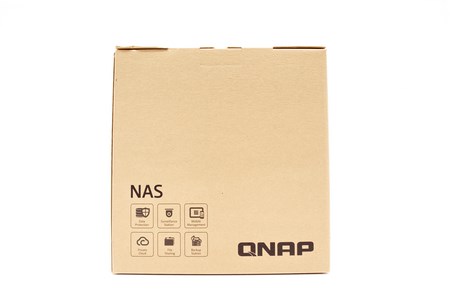

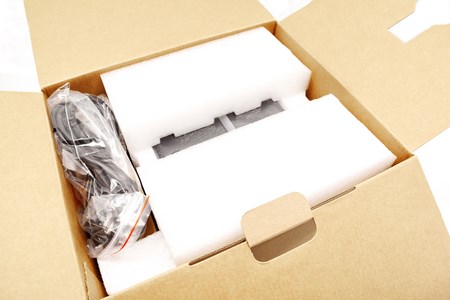
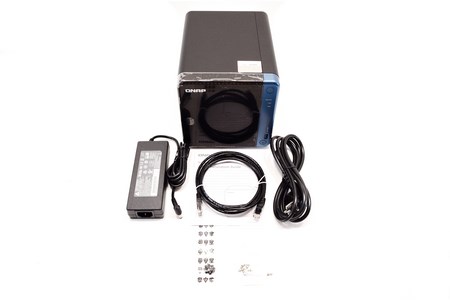
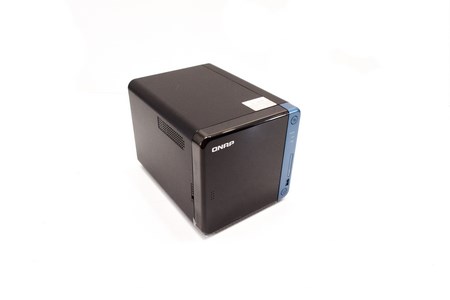
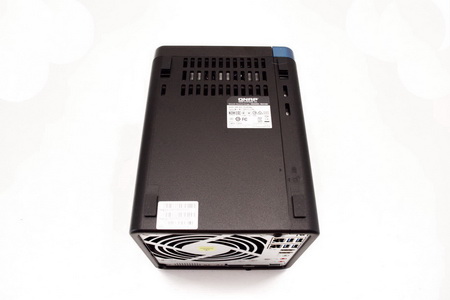
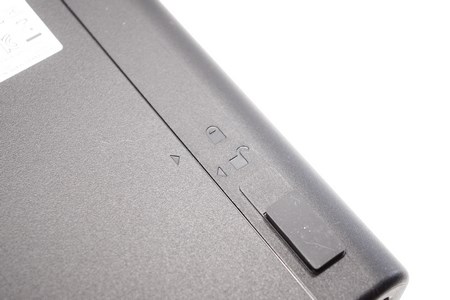
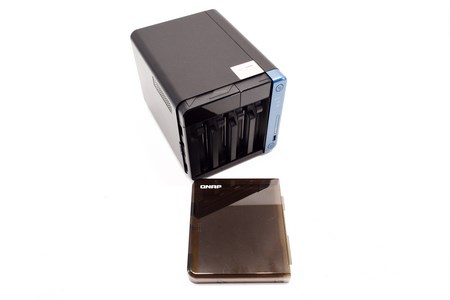
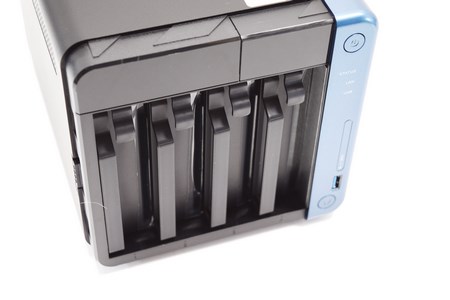
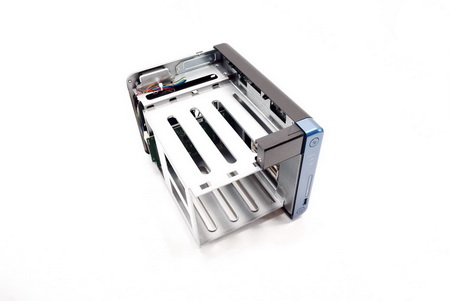
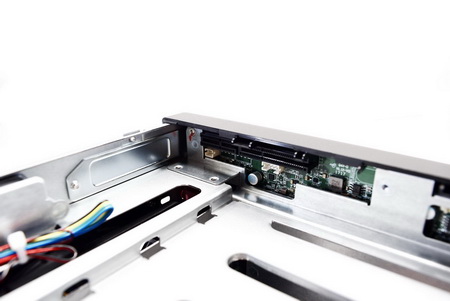
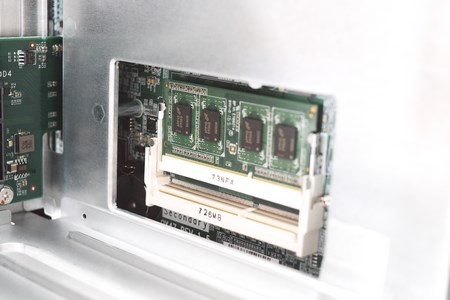
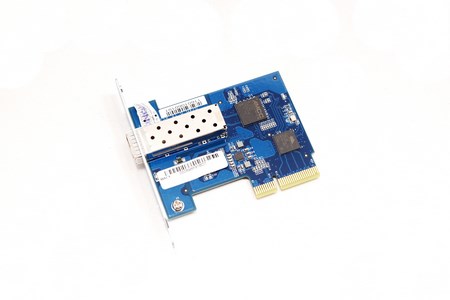
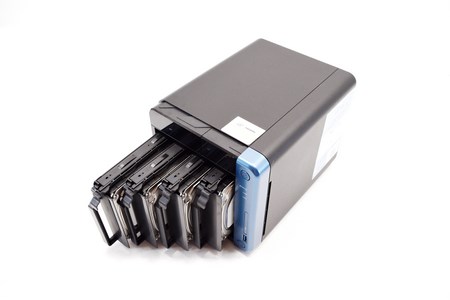
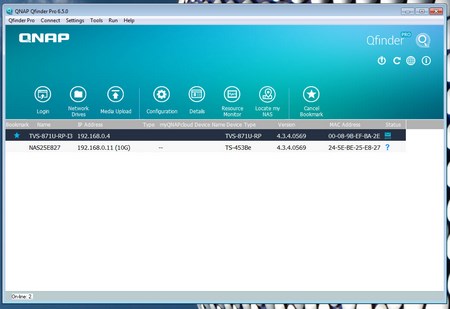

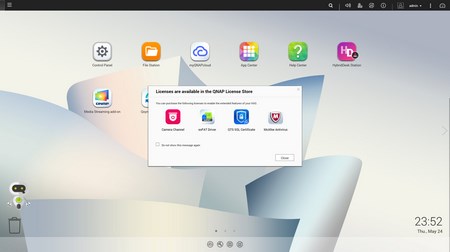
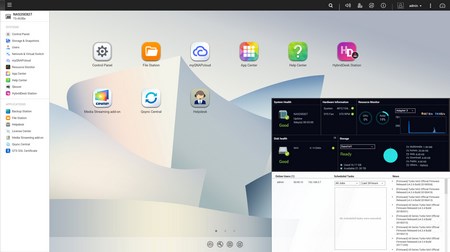
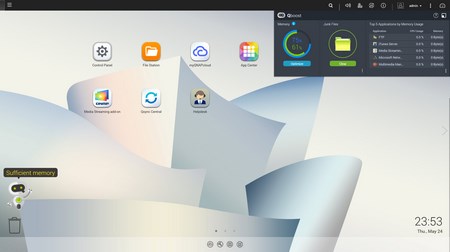
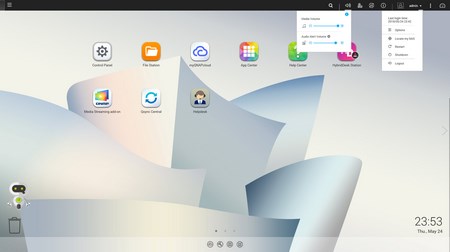
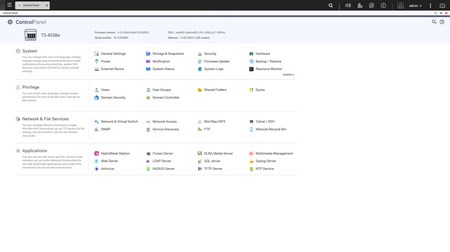
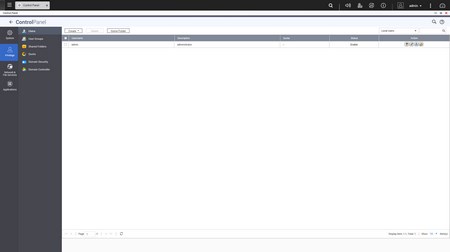
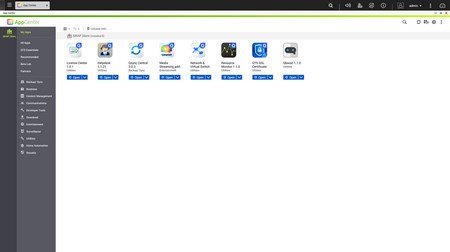
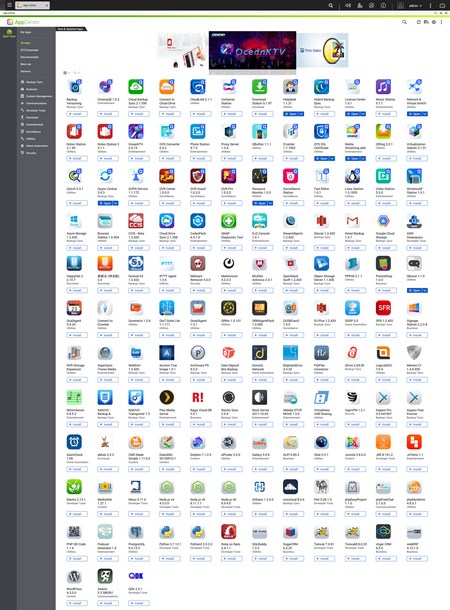
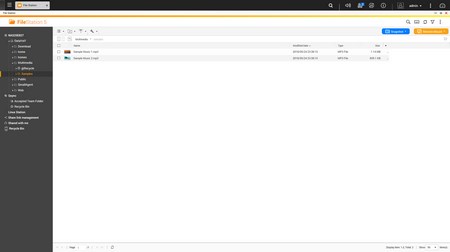
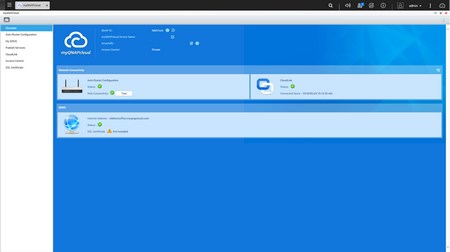
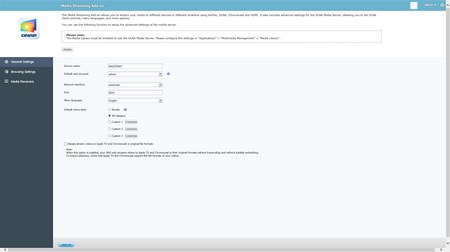
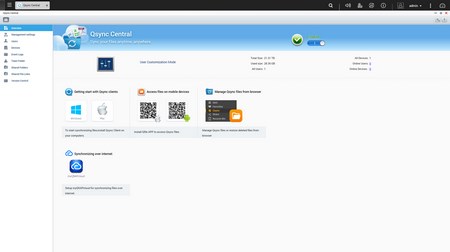
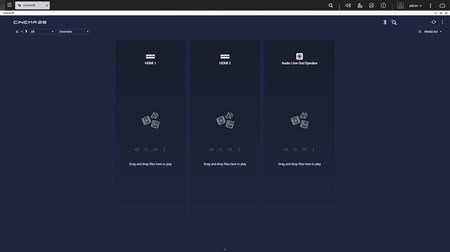
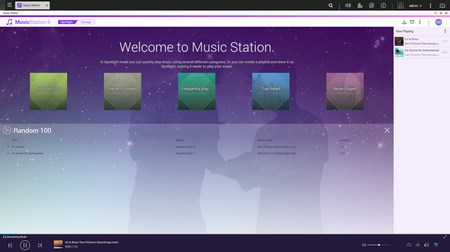
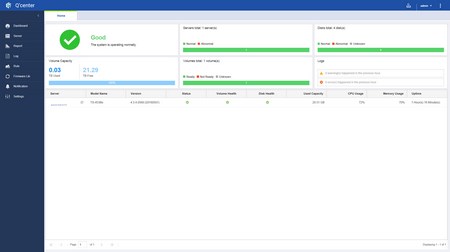
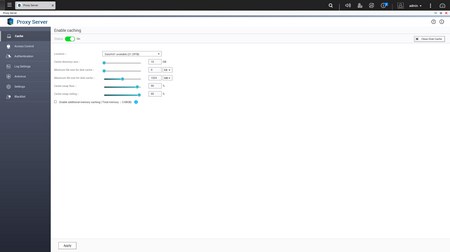


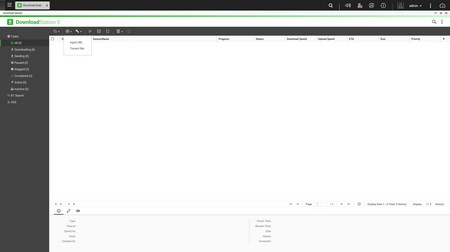
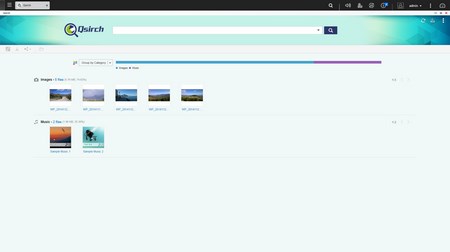

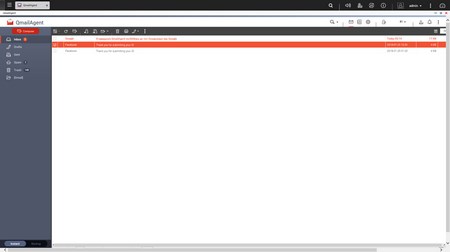
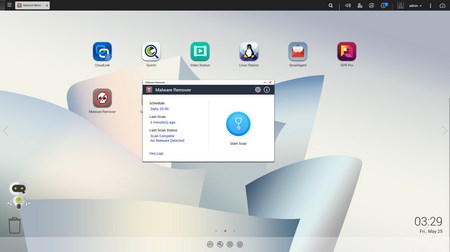
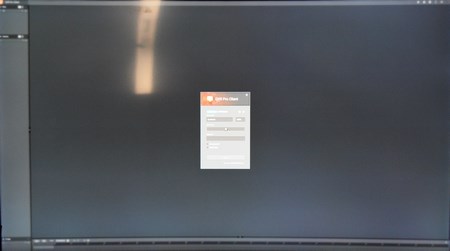

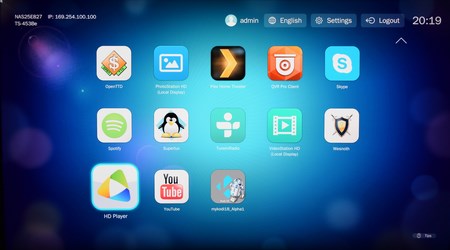


.png)

